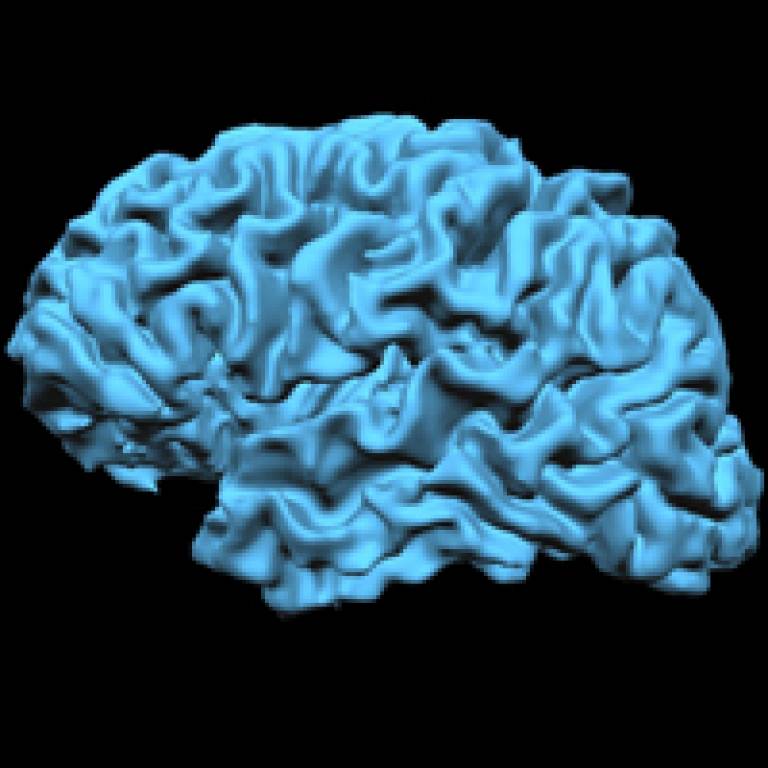Mother's care is key to a big brain
7 September 2010
Links:
 pnas.org/content/early/recent" target="_self">Proceedings of the National Academy of Sciences
(PNAS)
pnas.org/content/early/recent" target="_self">Proceedings of the National Academy of Sciences
(PNAS)
The evolution of big-brained mammals may be due to maternal investment,
rather than metabolism, according to a new study by scientists at UCL
(University College London) and the University of Cambridge.
Published today in Proceedings of the National Academy of Sciences
(PNAS) the study analysed data sets of the brain sizes of 197 marsupial
and 457 placental mammals to test the influences of metabolism versus
maternal investment on brain size evolution.
Contrary to popular hypotheses, researchers found that marsupial
mammals, for example kangaroos and possums, had relative brain sizes
that are just as big as placental mammals (dogs, horses etc), and even
tend to be bigger-brained in some cases.
Big brains in both groups were correlated to length of maternal care,
for example a longer period of lactation. However, basal metabolic
rate, or the energy an animal expends at rest, did not correlate with
marsupial brain size, whereas they did correlate in placental mammals.
High metabolism was previously thought to be a requirement for big
brains as brain tissue is costly to run.
Marsupial brains grow slowly and mainly after birth in the mother's
pouch, whereas placental mammal brains grow rapidly during gestation,
where they benefit from the high metabolic rate of the mother. This
study suggests that large brain size can evolve in mammals with low
metabolisms as long as they have a period of extended maternal care
after birth.
The researchers also suggest that the evolution of the hugely enlarged brains of some primates can be accounted for by their extended brain growth both during gestation and after birth during a lengthy maternal caring period.
Dr Vera Weisbecker, a joint postdoctoral fellow at the University of Cambridge, Jena University (Germany) and UCL's Department of Genetics, Evolution & Environment, and lead author of the paper said: "Maternal investment is a much more universal factor in the evolution of big brains than metabolic rate".
Dr Anjali Goswami, UCL Department of Genetics, Evolution &
Environment and Earth Sciences, and co-author of the paper added, "For
a long time, our interest in our own large brains has focused the field
on placental characteristics, such as high basal metabolic rate, and
made us overlook the role of maternal care after birth on the evolution
of big brains.
"However, if we take primates out of the equation, we discover that marsupials, despite having much lower metabolic rates, have similarly sized brains, or sometimes even bigger brains, than their placental mammal counterparts. So clearly, evolving big brains isn't just about having a high metabolism. Instead, it seems that maternal care is the most consistent factor driving the development of big brains across all mammals."
Brain development in the two groups is a case of 'the hare and the tortoise'. Placental mammals are the 'hares' - their brains develop very fast during gestation, with relatively little growth after birth. Marsupials are the 'tortoises' - they are born with very little of their brain developed but then grow slowly and steadily for an extended period after birth whilst they are being cared for by their mothers.
"It appears that primate brains benefit from the best of both methods of increasing brain size - their brains grow rapidly during gestation in line with their fellow placental mammals, but also develop significantly after birth during a maternal care period which is only comparable to marsupials in terms of length," added Dr Goswami.
The research was funded by a Volkswagen Foundation Evolution Initiative Postdoctoral Fellowship Grant to V Weisbecker.
Media contact: Clare Ryan
UCL Context
The Research Department of Genetics, Evolution and Environment brings together scientists with shared interests in genetics, evolutionary and environmental biology. It traces its origins to the Department of Comparative Anatomy, founded in 1826 and incorporates the Galton Laboratory. Current research at the Department includes evolutionary and environmental biology, genetics including human genetics, and systems and theoretical biology.
Related news
 Close
Close

